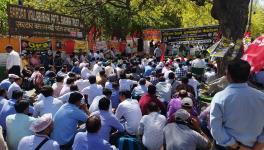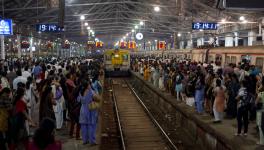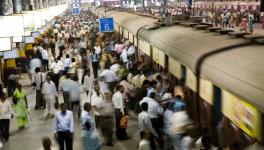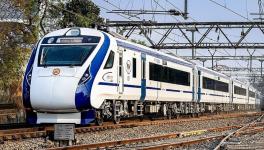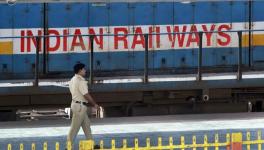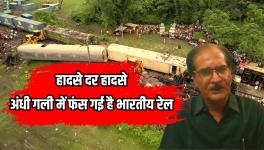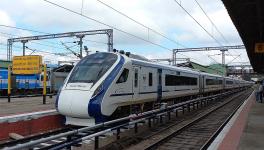Falling Punctuality Rate, Delayed Reforms: Railways’ Performance Poor as Fiscal Year Ends
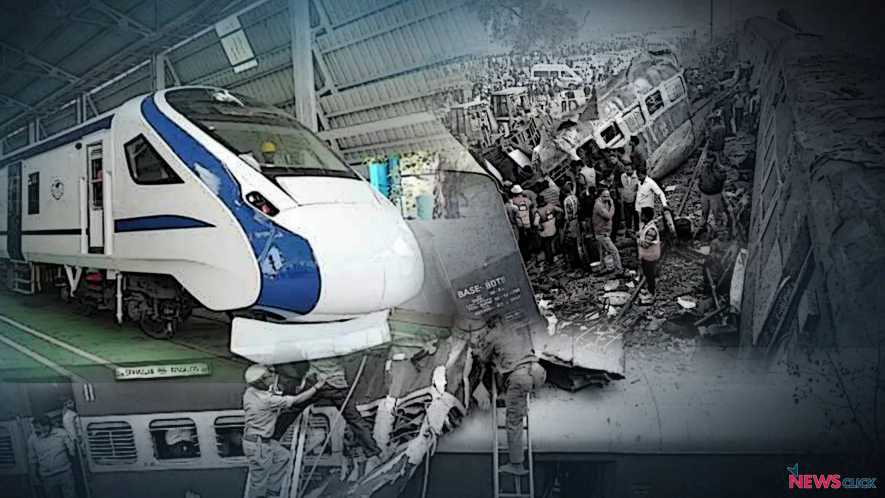
With the 2018-19 fiscal year coming to an end, glaring lapses on many fronts in Indian Railways including falling punctuality rate, high equipment failures and the much required reforms pushed at slow lane are staring at the upcoming new financial year.
Although the route electrification work, cleanliness at rail premises and passenger amenities have improved to some extent under Railway Minister Piyush Goyal in the current fiscal, the dedicated freight corridor (DFC) – the national transporter's flagship project – is still far away from even partial commissioning. Commissioning of Western and Eastern DFC is crucial for attracting more loadings and earning increased revenue.
Despite the fact that speed is the latest mantra in Indian Railways aiming at reducing the travelling time between two cities, the proposed semi-high speed projects on Delhi-Chandigarh, Delhi-Bhopal, Delhi-Kolkata and Delhi-Mumbai are yet to take off.
In 2018-19, the punctuality rate reduced to 68.91% as against 71.55% in 2017-18 and 76.67% in 2016-17, according to railways data. The deterioration in punctuality performance is a direct indicator that maximum number of trains are running behind schedule causing great inconvenience to passengers.
While North Central Railway is the worst performer with 47.11% followed by 54.74% in South East Central Railway and 59.47% in Northern Railways, East Coast Railway has recorded 75.34%, a slightly improved performance as compared to the last fiscal.
Also Read: Women Madhubani Artists Who Painted Bihar Sampark Kranti Express Still Not Paid
The much-trumpeted Train-18 also known as Vande Bharat Express which was launched after missing three deadlines, has again been caught between the departmental turf war in railways with both Electrical and Mechanical wings refusing to cede space. Though railways has promised to manufacture 40 more Vande Bharat trains in the next three years, the induction of the very next rake is delayed now.
Besides, even though the Rs 100 crore Vande Bharat train has capacity to run at 160 kmph, it is running at maximum 110-130 kmph speed between Delhi and Varanasi in the absence of semi-high speed track. The plan to upgrade speed upto 160 kmph on the existing track between various routes is stuck on the drawing board despite the completion of surveys and detailed project reports.
Despite several precautionary measures, the Railways has witnessed significant number of equipment failures including rail fracture, train parting, signal and weld failures in the current fiscal. There were five fire incidents, 43 derailment cases, six accidents at level crossings - three each at unmanned and manned level crossings - in the current fiscal. While 97,520 cases of signal failure registered, there were 2,313 cases of over head electric (OHE) failure reported upto January this year. According to the data, coach detachment was reported 1,302 times, wagon detachment reported 2,059 times and train parting cases were reported 643 times across the country upto January this year causing disruption in train movement.
Also Read: Vande Bharat Train Rams Into Nilgai on Maiden Journey
The long-awaited cadre review of officers took place after almost 15 years, a positive development which entails opening more promotional avenues for railway officers. However, the proposed reforms in the selection process aiming at choosing best and meritorious officers in the top level posts specially Divisional Railway Manager (DRM), General Manager (GM), and Railway Board members have been put in the back burner and as a result only seniority criteria is applicable now.
“If reforms are introduced in the railway selection process only then can meritorious people be employed. This will also mean that the that passions and commitment of officers at these levels take the organisation to a new height to make a new railways of new India,” said an expert in railways.
Quoting Sridharan committee reports, he said, “The committee has recommended that there should be positive act of selection for 68 DRMs and 27 GMs and from amongst these we should select the best officers for manning the post of Board Members. In fact Goyal regime could have done better had there been more devoted DRMs and GMs in the field.”
While former Railway Minister Suresh Prabhu had initiated reforms to discourage departmentalism, it was discontinued in Goyal's tenure. Though Prabhu had undertaken Kaya Kalp, an exercise involving Ratan Tata, to achieve zero accident rate in Indian Railways, the move did not find much favour with the incumbent Goyal. The Kaya Kalp initiative was finally shelved after six meetings presided by Tata himself at Rail Bhawan attended by senior railway officials with many proposals aiming to strengthen safety.
Arun Kumar Das is a Delhi-based senior journalist.
Read More: Railway Employees Oppose Bullet Train Project, Threaten to Protest
Get the latest reports & analysis with people's perspective on Protests, movements & deep analytical videos, discussions of the current affairs in your Telegram app. Subscribe to NewsClick's Telegram channel & get Real-Time updates on stories, as they get published on our website.









